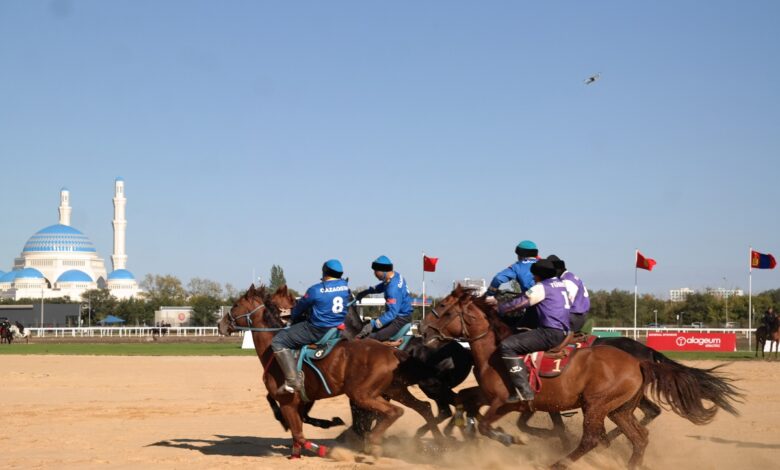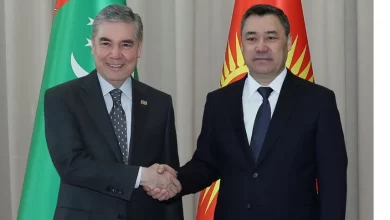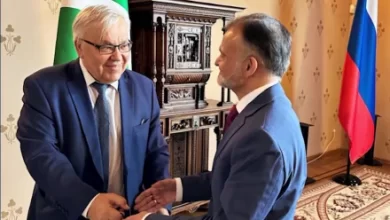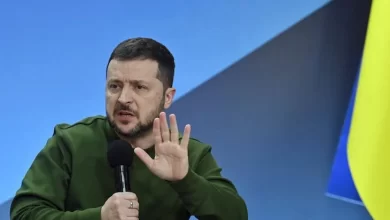Kazakhstan: Turkic unity and Kazakh culture on display at Nomad Games

Horsemen tussling over goat carcasses, arrows flying across the steppe, titans hoisting logs aloft in feats of endurance.
Such are the scenes as Astana – usually a staid city inhabited by straightlaced bureaucrats – hosts the World Nomad Games, which conclude September 13. Some 2,500 athletes from 89 countries – as far afield as Colombia and Zimbabwe – are competing in the games, informally dubbed the “Nomad Olympics.”
Turkic culture is at the heart of the World Nomad Games, the brainchild of Kyrgyzstan, which hosted the first contest in 2014. Always attuned to a PR opportunity, Astana has harnessed the occasion to project soft power, striving to showcase Kazakh history, culture and traditions to an international audience, while fostering patriotism and a sense of national identity at home.
Judging by the spectators’ enthusiastic reactions, the games – which cost the public purse $12 million, with sponsors also contributing – has scored successes on both fronts.
“This is a big celebration for us,” said Asel Kabdusheva, an Astana businesswoman strolling with her husband and children at Etnoaul (“Ethnic village”), a yurt-dotted venue where horseback archery was taking place and craftsmen were touting wares from felt clothes and carpets to horsewhips and saddles.
“We love how our children, our younger generation, can see all our traditions here. This is our culture. We don’t live in yurts like our ancestors did, but it’s great that we can bring our children and show them how our ancestors lived, that we were a nomadic people and what our traditions were.”
The exotic-looking sports wowed foreign visitors.
“It’s great – very different to what we know!” enthused Denis Lamarche, a French IT specialist holidaying in Kazakhstan.
Equine sports took center stage: from racing and horseback wrestling to tenge ilu, whereplayers leaned down from galloping horses to grab a pouch of coins from the ground, and kokpar, a rough-and-tumble form of polo traditionally using goat carcasses as the ball (nowadays in Kazakhstan the carcasses are plastic).
“They played really well,” enthused Iman Dinkayev, an Astana economics student, after watching the Kazakhs trounce the Uzbeks 16-0 at kokpar before going on to beat Kyrgyzstan in the final. Embracing the spirit of the games, he sported a stylish shapan (robe) in the national color, turquoise, his name embroidered on the back.
Golden eagles, hawks and falcons swooped through the sky in the birds of prey contests.
In addition to wrestling, there was a strongman competition with contestants carrying 100-kilogram rocks and hoisting aloft 130-kilogram logs.
The competition also has tested mental prowess with boardgame-style games. Some were rooted in Central Asian culture, like togyzkumalak, where players compete to amass pebbles, and ordo, where competitors strategize to win battles using sheep bones as pieces. Others came from further afield, like oware, a West African game where players strive to collect the most balls.
Most contestants hail from countries with a nomadic heritage, many from the Central Asian and wider Eurasian region, with Kyrgyzstan, Uzbekistan, Turkmenistan, Turkey, and Hungary well represented. But teams turned up from places as diverse as China, Colombia, Poland, Thailand, the UAE, the USA, and Zimbabwe.
For some, this was a welcome chance to compete internationally in their chosen sport. “I normally just do this in my village,” said Tsering Galuma, an archer from Ladakh in India, attired in traditional dress and carrying a bow as tall as himself.
For others, it was a bit of fun. British students, for instance, fielded a tug-of-war team, without holding out much hope of success against their burlier opponents.
A rider on a white horse led each team onto the stage at the opening ceremony held in the Astana Arena stadium on September 7. Waving Kazakh flags, the crowd gave big cheers for the home team and for Central Asian neighbors, as well as for Turkey and the USA. Russia’s team elicited some cheering too, albeit more muted.
The pageantry featured a lavish romp through Kazakh history, with colorful performances by singers, dancers, galumphing camels, majestic eagles and sleek tazy dogs. Kazakh superstar Dimash Qudaibergen performed a patriotic song.
“The nomads of the Great Steppe inhabited vast Eurasia from ancient times,” Kassym-Jomart Tokayev, Kazakhstan’s president, told the audience.
“They introduced profound changes into the process of global progress, mastering technologies that were advanced for their time. Five thousand years ago nomads domesticated the horse and shaped an equestrian culture that astounded the world. They created powerful weapons and crafted marvelous jewelry.”
He noted the long history of statehood in a region where “our ancestors founded colossal states and built great cities.” This is important to Kazakhstan, which dates its roots back over half a millennium but has in the past fended off irredentist Russian claims about its history.
Tokayev sat alongside Shavkat Mirziyoyev, Uzbekistan’s president; Sadyr Japarov, Kyrgyzstan’s president; and Gurbanguly Berdymukhamedov, the ex-president of Turkmenistan and father of the current president. With them was Bilal Erdoğan, president of the World Ethnosport Confederation and the son of Turkey’s president.
The optics emphasized Turkic unity, reflecting an uptick in cooperation since Russia invaded Ukraine. “Serving as a bridge between East and West, the nomadic people encouraged the rapprochement of different cultures,” Tokayev said, highlighting the region’s historic and modern-day significance as a lynchpin between Europe and Asia.
These nomad games were an “image-making and emotional project” for Kazakhstan, suggested political pundit Dosym Satpayev.
The emotional baggage stems from Joseph Stalin’s collectivization of agriculture in the 1930s, when the Soviet state seized nomads’ herds and forced them onto collective farms, causing famine in Kazakhstan and the “death of the nomadic civilization” in Central Asia.
“So this is a revival of nomadic civilization and traditions,” Satpayev told Eurasianet. “There is huge demand among young people, especially in Kazakhstan, to know their roots. All this was destroyed in the Soviet Union, so this is an attempt of sorts to revive this spirit.”
Kazakhstan has topped the medals table, but the symbolism of the occasion seemed as important as the sporting victories. “The nomad games show that this was a whole civilization with deep roots and traditions that must be remembered and respected,” Satpayev concluded.
Source:Eurasianet



